Lecture 17: How to Build Products Users Love, Part II
第17讲:如何打造用户喜爱的产品,第二部分
第17讲课程视频
![图片[1]_Lecture 17: How to Build Products Users Love, Part II 第17讲:如何打造用户喜爱的产品,第二部分_繁木网](http://fanmu.com/wp-content/uploads/2021/12/Y-Combinator.jpg)
讨论地址:http://www.huomen.com/topic-show-id-103.html
Thank you Sam for having me. Sam and I have known each other for a long time. We met in the early days when he was on his company journey. He asked me to talk today about the hardware journey of building products. I want to give you guys a little bit of an overview of Jawbone: what we do, how we think about the world, and how that informs how we build products. I’ll then go into the process of how we design, how we develop, and how that all comes together through what we do to change categories.
谢谢山姆邀请我。山姆和我认识很长时间了。我们是在他出差的早期认识的。他让我今天谈一谈建筑产品的硬件之旅。我想给大家一点关于Jawbone的概述:我们做什么,我们对世界的看法,以及我们如何构建产品。然后我将进入我们如何设计、如何发展的过程,以及如何通过我们改变类别的方式将这些结合在一起。
I always like to start with the broadest thinking. The way we look at the world is we think of ourselves at this intersection of really crafted innovation in engineering that’s almost invisible to the user in terms of its functionality, even beyond design. We have been designing products for well over a decade now. We think that the conversation has shifted even beyond design into beauty. It’s the intersection of engineering meets beauty. The whole point is to help people have a better life with technology.
我总喜欢从最广泛的思考开始。我们对世界的看法是,我们认为自己处于这一交集,真正精工细作的工程创新,就其功能而言,用户几乎看不见,甚至超越设计。我们设计产品已经超过十年了。我们认为,对话已从设计转向美。是工程与美的交集。关键是要用科技帮助人们过上更好的生活。
Largely speaking we play in this world of “The Internet of Things.” We were there before there was such a moniker. We have smart devices that have computing power and connectivity with sensors that are measuring all kinds of things. They’re wirelessly connected and they’re all talking to you. We started on this journey really, really early. Right out of engineering school here, we were developing core technology. We decided to build consumer products around that.
在很大程度上,我们是在“物联网”的世界里玩的。在出现这样一个绰号之前,我们就在这个世界上。我们的智能设备具有计算能力,并与测量各种物体的传感器相连。他们是无线连接的,他们都在和你说话。我们很早就开始了这段旅程。我们刚从工程学校毕业,就在开发核心技术。我们决定围绕这一点开发消费品。
Our first consumer product was the headset. We created a headset that became a wearable computer. It was the first traveling headset. That was when we started thinking about wearable computing. We then invented the wireless speaker space around Bluetooth and audio. I will talk a little about that journey. Most recently, we focused our attention on the wearable health revolution and using a lot of the sensors that we did in the first generation of headsets and applying them to other parts of the body to understand more about users.
我们的第一个消费品是耳机。我们发明了一种可穿戴电脑的头戴式耳机。这是第一款旅行耳机。当时我们开始考虑可穿戴计算。然后我们发明了围绕蓝牙和音频的无线扬声器空间。我要讲一讲这段旅程。最近,我们将注意力集中在可穿戴健康革命上,并使用了我们在第一代耳机中使用的大量传感器,并将其应用于身体的其他部分,以了解更多用户。
Our view of this world, having been here for a long time, is that it is a little bit of a mess. In the internet of things everything is smart, connected, and has an app built for it, but that doesn’t mean that it is easy for users. Your microwave, your refrigerator, your car, your Xbox, your Xfinity Comcast, everything has an app. They don’t talk to each other. It’s really confusing for the user. We think that there is a desperate need for an organizing principal around all of this. This is the core of when we start to think about how we build and opportunities to create products. We think about where the world is going. If there is going to be such a world that everyone’s talking about on the internet of things which is happening, you desperately need these organizing principals so that it’s easier for users to understand how to come in and interact with these services. So we think that is the shift from less about the actual things to being about the individual user.
我们对这个世界的看法,已经在这里呆了很长时间,是有点乱。在物联网中,一切都是智能的、互联的,并且有一个专为其开发的应用程序,但这并不意味着对用户来说很容易。你的微波炉,你的冰箱,你的汽车,你的Xbox,你的Xfinity Comcast,一切都有一个应用。他们不说话。这对用户来说真的很难理解。我们认为,围绕这一切,我们迫切需要一位有组织的校长。这是我们开始考虑如何建立和创造产品机会的核心。我们在思考世界将走向何方。如果要有一个每个人都在互联网上讨论正在发生的事情的世界,那么您迫切需要这些组织原则,以便用户更容易理解如何加入并与这些服务进行交互。因此,我们认为这是从较少关注实际情况到关注个人用户的转变。
When everyone is talking about wearables and you have things like Google Glass and Apple Watch, ultimately what we believe is that when you have things that are on your body 24/7, they become a perfect context engine for everything in the world around you. My phone is not on me. It’s in my jacket or sometimes on the charger. But my Up is on me. And it understands everything that is happening when it’s tracking my heart rate. It’s tracking my respiration. It’s tracking all these different things. When I say context engine, I can tell the smart thermostat, my Nest, that I am hot or cold. That device doesn’t have that understanding. I can tell it I am hot but that device doesn’t know if I’m hot because I’m sick, I went for a run, or if it’s hot outside. I can tell your car that you’re falling asleep, agitated, or irritated. This is ultimately where we think the world is moving. Wearables are going to be the center of this revelation around everything being connected and smart. We are going to drive what a lot of those interactions are going to be and how they’re going to work. That’s the first principal that we think about. Where are things going? What should we build and how should we think about new categories.
当每个人都在讨论可穿戴设备,而你拥有谷歌玻璃和苹果手表,我们最终相信的是,当你拥有24/7小时都在身上的东西时,它们会成为你周围世界一切的完美背景引擎。我的电话不在我身上。它在我的外套里,有时也在充电箱里。但我的责任在我身上。当它追踪我的心脏时,它了解一切正在发生的事情。它在跟踪我的呼吸。它在追踪所有这些不同的事情。当我说环境引擎,我可以告诉智能恒温器,我的窝,我是热或冷。该设备没有这种理解。我可以告诉它我很热,但它不知道我是因为我病了才热,我跑了一圈,还是在户外很热。我可以告诉你的车你正在沉睡、烦躁或烦躁。这最终是我们认为世界在移动的地方。可穿戴设备将成为这一发现的中心,围绕着一切互联和智能。我们将推动这些互动的内容和运作方式。这是我们考虑的第一个原则。情况如何?我们应该建立什么以及我们应该如何考虑新类别。
欢迎到火门网讨论:huomen.com
In order for this vision to happen, you actually need to be great at almost everything. We need to be great at what we call the full stack. We have to be amazing at building hardware. These are hardware experiences that people have to keep on all the time. You have to wear them 24/7 because if you don’t, then everything that I am talking about is a castle in the air. You can’t actually create a service that people engage with or that gets lots of data that can then go power all these other things if it doesn’t start with great hardware. So that’s where we start, we try to build these magical experiences in hardware that are powered by software. We have developed world class software application expertise. We have to be good there, from an engagement perspective, like an Instagram or WhatsApp.
为了实现这个愿景,你实际上需要在几乎所有事情上都表现出色。我们需要做好我们称之为全套的工作。我们必须在建筑硬件方面出类拔萃。这些都是人们必须一直保持的硬件体验。你必须24/7戴着它们,因为如果你不戴,我所说的一切都是空中楼阁。如果一个服务不是从优秀的硬件开始的,那么你不能创建一个让人们参与的服务,或者一个可以获取大量数据的服务。因此,这就是我们的出发点,我们尝试在由软件驱动的硬件中建立这些神奇的体验。我们已开发出世界级的软件应用专业知识。从参与的角度来看,我们必须做好准备,比如Instagram或WhatsApp。
On the data side we have to know what to do with this massive amount of information. We have to know how to process it, push it, and have it work for the user. We really see ourselves at the intersection of hardware, software, and data. These are three equal stools that have to work together in order to unlock that experience around something that is on you, that knows what’s happening and then talks to the rest of world. That’s a key piece of what we do. It’s different than what a lot of other companies doing. It allows and requires to play at all levels of stack.
在数据方面,我们必须知道如何处理这些海量信息。我们必须知道如何处理它,推动它,并让它为用户工作。我们确实看到自己处于硬件、软件和数据的交汇处。这是三张相等的大便,它们必须齐心协力,才能在你身上的某件事情上释放出这种体验,它知道发生了什么,然后与世界其他地方对话。这是我们工作的关键。这与许多其他公司的做法不同。它允许并要求在所有级别的堆叠中进行游戏。
This was a complicated thing for us to put together because typically people who are great at hardware understand mechanical engineering, electrical engineering, and how those things interact. They understand how you build tools at scale. They’re not typically great at building software and services. It’s a very different discipline and requires a very different skill set. When we first put those pieces together, it created a lot of interesting friction in the company. Our software and application team was so used to moving really, really fast and iterating, whereas in the hardware world you’ve got to take your time because your iteration cycles are much more deliberate. You have tooling that takes sixteen weeks. You can’t just tweak stuff and you can’t hack it in the same way. It was interesting to see that when we put all these pieces together, the hardware learned to move faster. The software guys thought more about how they could resolve experiences before they actually shipped it, versus just throwing something out and A/B testing it. Then the data science informs all of that with more information to make decisions.
这对我们来说是一件复杂的事情,因为通常擅长硬件的人都了解机械工程、电气工程,以及这些东西是如何相互作用的。他们了解如何按规模构建工具。他们通常不擅长构建软件和服务。这是一门非常不同的学科,需要非常不同的技能。当我们第一次将这些部分整合在一起时,公司内部产生了许多有趣的摩擦。我们的软件和应用程序团队已经习惯了真正快速的迭代,而在硬件领域,由于迭代周期更为周详,所以您必须花费时间。你有需要十六个星期的工具。你不能只是调整一些东西,也不能用同样的方法来破解。有趣的是,当我们把所有这些部件组装在一起时,硬件学会了更快地移动。软件人员更多地考虑如何在实际交付体验前解决体验,而不是简单地抛弃一些东西并用A/B测试。然后,数据科学将提供更多信息以作出决策。
So how do we think about and how do we build products? How do we change categories? First of all, everything for us is a system. We don’t think about it discretely as a piece of hardware or discretely as an application or discretely as a platform. We think across the whole thing. This is an example with Up. We have these tracking sensors on the body out rhythms there it connects to the phone where you have this engaging application service experiences. We use the sensors in the phone. That talks to a lot of stuff we are doing in cloud where we are taking all that information, driving insight on it and then we have a huge platform of thousands of developers – where they’re thousands of apps that then plugin and also create more experiences. And so we think about it across the whole spectrum. And I, I’ll come back to this system think in, in a second.
因此,我们如何考虑及如何构建产品?我们如何更改类别?第一,我们的一切都是一个系统。我们不会将其单独视为硬件、应用程序或平台。我们从整体上考虑问题。这是Up的一个例子。我们将这些跟踪传感器安装在身体外的节奏上,并将其连接到手机上,让您在手机上享受这项吸引人的应用服务体验。我们使用手机的感应器。这与我们在云端所做的许多事情有关,我们在云端获取所有信息,深入了解这些信息,然后我们有一个由数千名开发人员组成的巨大平台,在这个平台上,我们有数千个应用程序,然后加入并创造更多体验。因此,我们从各个方面考虑这个问题。我会在一回到这个系统。
What does the actual process of creation look like? This is fun for me because we don’t actually talk about this very often. We keep it confidential and private and I know that we’re on a live cast. It’s fun for me to talk about this for the first time. It’s a quite deliberate process. This is a little bit of what it looks like. This is a map where we are much unbridled in our imagination in the exploration phase. We start to validate some of our concepts, bring those ideas tighter, and tighten them. And then we actually start to build a product. Launch it and then iterate. That’s the simplest way to look at it. I’ll take you through each of these steps.
实际的创作过程是怎样的?这对我来说很有趣,因为我们实际上很少讨论这个。我们对其保密和保密,我知道我们是在一直播。第一次谈这个对我来说很有趣。这是一个经过深思熟虑的过程。这有点像。这是一张我们在探索阶段无限想像的地图。我们开始验证我们的一些概念,把这些想法收紧,并收紧。然后我们实际开始构建一个产品。启动并迭代。这是最简单的方法。我将带你完成这些步骤。
The exploration phase is very wild. It’s imaginative. We think about the vision of where the world is going and what our strategy is. What does the brand stand for? You’re dreaming. You’re imagining it. How do I disrupt? What’s the future going to look like? It is a little bit of a science project and we talk about it in that way. We build from inspiration, insight, and raw creativity. We want to create and we try to create a form where that’s ok because a lot of times in companies that gets lost. Then we we start to bring in early validation, where I say, ” Look everyone, when you’re doing this stuff, you have to now take those concepts and prove them like you do in a PhD Thesis.” You have your conclusions, you’ve done your empirical data collection, and you start to say here’s where we see it going. Here’s what’s its going to do. You outline the story.
勘探阶段非常疯狂。很有想像力。我们考虑世界将何去何从以及我们的战略是什么。品牌代表什么?你在做梦。你在想像。如何中断?未来会是什么样?这有点像一个科学项目,我们是这样讨论的。我们以灵感、洞察力和原始创造力为基础。我们希望创建并尝试创建一个这样的表单,因为很多时候在公司中都会失败。然后我们开始进行早期验证,我会说,“大家看,当你做这些事情的时候,你必须像在博士论文中一样接受这些概念并证明它们”,你有你的结论,你已经完成了经验数据的收集,并且开始说我们看到了它的发展。这是它将要做的。你概述了这个故事。
Once we sign off on that phase, we start to go into a concerting phase. Where we start to really think about the experience and what’s possible. This is another interesting opportunity for innovation at a more specific level. How will this come to life and how will we sell that experience? How will we tell that story? Then we decide its program. It goes into a heavy planning phase where we say, “Ok. We’re doing this. We’ve got to ship it. There is no turning back.” What are the tradeoffs between all the creativity and all the ideas we want versus what the physics dictates? What are all the different constraints that we have? We start making tradeoffs and we look at how to pull that together.
一旦我们在该阶段签约,我们就开始进入一个音乐会阶段。我们从哪里开始真正思考体验和可能发生的事情。这是另一个更具体层面创新的有趣机会。这将如何实现,以及我们将如何销售这种体验?我们将如何讲述这个故事?然后我们决定其计划。进入了一个繁重的计划阶段,我们会说“好的。我们在做这个。我们得把它送去。所有的创意和所有我们想表达的想法,与物理学所规定的相比,两者之间的权衡是什么?我们有哪些不同的限制?我们开始作出权衡,并研究如何综合考虑。
Then we move into a development phase. It’s a hand off between various stages and very functional teams in the company. You pull together and you’re solving problems as you implement and launch it. You learn. You see what users think. You start to think about where does this stand in that experience continuum that you’ve been imaging where the world is going to go. What have we achieved? What haven’t we achieved? What have we learned from our users? How does that change what we’re thinking? And then we start right over again.
然后进入开发阶段。这是公司不同阶段和非常有职能的团队之间的一次转移。你齐心协力,在实施和启动的过程中解决问题。你学会了。您了解用户的想法。你开始思考,在你一直想像的世界将走向何方的经验连续体中,这代表了什么。我们取得了哪些成就?我们还没有取得什么成就?我们从用户中学到了什么?这如何改变我们的想法?然后我们重新开始。
That’s the broadest way to think about it. The exploration phase is very much like a building and tinkering process. A lot of it is driven by demo Fridays where people have an opportunity to showcase their work. We find that’s a great way to pull it together, pull it into a form where others can consume it and give feedback. It’s a really it is a show and tell. Obviously hack-a-thons are a big part of it. There’s lots of data that gets driven. It’s lead by our Strategic Development Team, which is traditionally called an R&D Team. There is participation from product and engineering, both hardware and software. But they’re sort of taking a back seat and they’re looking at what these explorations are. The Executives at the company at this phase are more of a signing board. They’re there to poke and prod and tell people, “Hey think about this.” Or “Did you try that? How does that work?”
这是最能说明问题的方法。勘探阶段非常像一个建筑和修补过程。很多都是由演示周五推动的,人们有机会展示他们的工作。我们发现这是一个很好的方法,把它拉到一起,形成一个其他人可以消费它并给予反馈的形式。它是一部真正的一,它是一部表演与讲述的电影。显然,哈克马拉松是其中的一大组成部分。有很多数据被驱动。它由我们的战略开发团队领导,传统上称为研发团队。有来自产品和工程的参与,包括硬件和软件。但他们有点退居二线,他们正在研究这些探索是什么。在这个阶段,公司的管理人员更多的是签约董事会。他们会用手指刺人,然后告诉人们“嗨,想一想”或“你试过了么?它是如何工作的
In this phase, in order to move to the next threshold, we think, “Would I give this guy 50 grand?” It’s like an angel investment. Would I give this guy 50 grand to go explore this and see if there’s is there something to do? And our CTO is the final decision maker. He gets to pick internally and say, “You know what? I like all the feedback. This is the one I want to go chase down and see what happens.”
在这个阶段,为了迈向下一个门槛,我们会想,“我会给这个人50块钱么这就像天使投资。我能不能给他50块去探索一下,看有没有办法?我们的首席技术官是最终决策者。他从内部挑选并说,“你知道么?我喜欢所有的反馈。这是我要去追查的一个目标,看会发生什么。」
Then we get into the validation phase. This where gets really interesting. It’s still led by R&D but they’re really poking at the idea and saying, “How does this work? We have leadership meetings with the broader cross functional team. I have to show results. I have to go through a scientific process to outline why this works. Why is it going to happen?” This is when we start formulating an important tool in the company, which is what we call WHYS. Defining the WHY of what we are doing. WHY does this exist? What problem does it solve? I’m going to come back to that in a minute.
然后我们进入验证阶段。这真的很有意思。它仍然由研发主导,但他们真的在钻研这个想法,并说,“这是如何工作的?我们与更广泛的跨职能团队举行领导会议。我必须展示结果。我必须通过一个科学的过程来概述其工作原理。为何会发生这种情况这是我们开始在公司制定一个重要工具的时候,这就是我们所说的原因。定义我们正在做的事情的原因。这为何存在?它解决了什么问题?我一分钟后再谈这个。
At this point it’s still an R&D lead, but this is when our industrial design team and a few project guys come in and think, “Ok how can I pull this concept into something physical, if it’s hardware? How is that going to interact with the rest of the pieces of the system?” Our product experience team is still driving a lot of the core values and the story boarding, but it starts to become a lot more real, when we start thinking, “Ok, how we will build this? How expensive is this going to be? What’s the budget going to be?” At that point, we start to really validate if we can actually build it. Do we have wait three years for batteries to be there? Do we have to wait for this other innovation to happen? Do we have to wait from a budget perspective? Is there a business viability? Then we start to really sketch briefs. This where I come in and make the final decision. “There’s really a there there. And we can now take this to the next level and get into play.”
在这一点上,这仍然是一个研发的领导,但这是当我们的工业设计团队和一些项目人员来了,并认为,“好吧,我怎么能把这个概念变成一些实际的东西,如果它是硬件?这将如何与系统的其余部分进行交互我们的产品体验团队仍在推动许多核心价值观和故事板,但当我们开始思考,“好,我们将如何建立这个?这要多少钱?预算是多少在这一点上,我们开始真正验证我们是否能够实际构建它。我们是否等了三年才有电池?我们是否必须等待这一创新的发生?从预算角度来看,我们必须等待么?是否存在业务可行性?然后我们开始真正地草拟简报。这是我来做最后决定的地方真的有一个。我们现在可以将其提升到一个新的水平,并开始发挥作用
Then we go into the concept phase. This is when the responsibilities shift from the R&D folks to what we call the product experience team. The way we think about product experience at Jawbone is what everyone thinks of as conventional design. So from industrial design to software design to audio design to anything that touches that experience. We have writers on that team. Story tellers. We have ID people like Eve who are Genius creators. We have amazing app level designers, graphic designers, everything. It’s all one team and we call that product experience. Their job is to unify us as one organization. That’s when they take hold and start to really drive the WHYS. They think about what’s possible. There’s a lot of innovation and creativity in the actual implementation of how we’re going to build and create a product. We start to say what the most important things in that product are. What are the most important problems we’re going to solve? We call them “Hero Experiences.” What are we going to do? What is the bar that would be acceptable?
然后我们进入概念阶段。这是当责任从研发人员转移到我们称之为产品体验团队的时候。我们在Jawbone的产品体验被大家视为传统设计。因此,从工业设计到软件设计再到音响设计,再到任何涉及到这种体验的东西。我们的团队里有编剧。讲故事的人。我们有像夏娃这样的天才创造者身份证。我们拥有出色的应用程序级设计师、平面设计师,应有尽有。这全部是一个团队,我们称之为产品体验。他们的工作是把我们统一为一个组织。当他们抓住了机会,开始真正了解原因。他们考虑可能发生的事。在我们将如何构建和创建一个产品的实际实施过程中,存在大量创新和创造力。我们开始说该产品中最重要的是什么。我们要解决的最重要的问题是什么?我们称之为“英雄经历”,我们该怎么办?可接受的标准是什么?
At this point we start to really resolve the WHYS, which I will show you again in a minute. Why is this different from the competition? From the category? Where does it go? We don’t like to do one off things. We have to see a broader vision. This is part of the creation experience. We look at where do we think the world is moving and think about how this is going to be a stepping stone to that ultimate end vision. That’s where the road map starts to get flushed out. Again, I have the ability here to be the final decision maker with my team and say, “Yup. We’re going to move this to this next phase.”
在这一点上,我们开始真正解决原因,我将在一分钟内再次向您展示。这与竞争有何区别?从类别中?去哪里?我们不喜欢做一件事。我们必须看到更广阔的前景。这是创造经验的一部分。我们审视世界正在向何处移动,并考虑这将如何成为实现最终愿景的踏脚石。这就是路线图开始被冲走的地方。再次强调,我有能力成为团队的最终决策者,并说“是的。我们将把这个转移到下一阶段
Here is also where we look at some of these things. I want to get into some specific examples. We have fast track programs. We took, for example, the Jambox when we were in this phase and we said, “We’re not going to go through another phase. We’re going straight into the development process because we want to get this thing out. We want to test it, market it, and move really quickly.” So we have the ability to prevent our own process and say let’s fast track it. We can recalibrate the go to market possibility.
这也是我们研究其中一些东西的地方。我想举一些具体的例子。我们有快车道项目。举个例子,我们在这个阶段的时候使用了Jambox,我们说,“我们不会再经历另一个阶段。我们将直接进入开发过程,因为我们希望将此内容推出。因此,我们有能力阻止我们自己的过程,并说让我们快速跟进。我们可以重新调整进入市场的可能性。
欢迎到火门网讨论:huomen.com
After this stage it shifts from that Product Experience Team to our Product Managers, who are really defining the business plan. When is it going to launch, when is it going to get into the retail calendar, what is the software release cycle. They are prototyping. They’re starting to make a lot of those tradeoffs. “Ok we wanted to build this. We can’t do that but here’s what we can do. We want to be this way. We want these functional experiences. We are going to sacrifice battery life, whatever it is.” That’s when we start to really pull those decisions and start to look at it. It’s a big juggling act at that point.
在此阶段后,我们的产品经理将从产品体验团队转移到真正定义业务计划的产品经理。它将于何时推出,何时进入零售日历,软件发布周期是什么。他们正在制作原型。他们开始在这些方面做出大量的权衡好吧,我们想建这个。我们不能这样做,但我们可以这样做。我们要走这条路。我们需要这些功能体验。我们将牺牲电池的寿命,无论它是什么。在这一点上是一个大杂耍。
The product guys are driving that. That’s when again, we look at and synthesize all of what we put together and we say, “Ok. Does it actually cross enough things off our list? Does it meet that minimum viability?” Because we always start with, as you can tell, this very big wish list of what’s possible and what we can do. Then we start to wheel it down and ask, “Does this cross enough of the value threshold that we think it’s worth pursuing?”
产品人员在推动这一进程。当我们再次审视并综合所有我们整合的内容时,我们会说,“好的。它真的在我们的清单上划去了足够多的东西?是否符合最低可行性因为正如你所知,我们总是从这个非常大的心愿清单开始,列出可能发生的事情和我们能做的事情。然后我们开始向下推,问:「这是否超过了我们认为值得追求的价值门槛
Now can we actually move it into the development phase where again Product Management Team continues to lead it. But now you’re starting to really get deep. This is where engineering comes in and is really starting to sign off on building it. Here’s the time schedule and how we ship. The Product Team is looking at how we should go deeper. How can we increase engagement? What are the little innovations? What are the tuning? What are the things that we need to do to make all that happen?
现在我们可以实际将其转移到产品管理团队继续领导的开发阶段了。但现在你开始真正深入了。这就是工程的发展方向,并真正开始在建筑上签字。这是我们的时间表和运输方式。产品团队正在研究我们应该如何深入。我们如何提高参与度?有哪些小创新?调音是什么?为了实现这一切,我们需要做什么?
We’ve been fortunate to have a lot of wonderful response to products that we’ve built. We take a lot of care and time in the details of this development and concerting phase, around little details that create these magical experiences. For example, when you turn on Jambox, you have this pretty cool sound that goes “WOOO.” It took months to come up with the right audio tuning. We worked with a lot of different audiographers to create that sound, but every time someone turns it on I see them smile and laugh.
我们很幸运,对我们所开发的产品有很多出色的反应。我们对这个发展和协调阶段的细节投入了大量的关注和时间,围绕创造这些神奇体验的小细节。例如,当你打开Jambox时,你会收到一个相当酷的声音,声音会变为「WOOO」,要花上好几个月才能做出正确的音频调整。我们曾与许多不同的音响师合作创造出这种声音,但每次有人打开它,我都会看到他们笑个不停。
The feel of the rubber retyping: there’s one manufacturer in the world that was able to make the rubber at the quality that we wanted and the colors that we wanted for the first Jambox. All of those little magical details. How do you resolve them, even in software? When we had the first UP, when you plugged it in your sleep graph showed up. Even just the animations of how the bars would show up and the way cards would flow, that was a detail that we thought about. How is this going interact, how is the user going to experience it? How are they going to feel it? A lot of that stuff happens even at the stage where you sign off on a program. You’re making those kind of decisions all the way through and you’re trading off and you’re doing it in the context of this bigger picture. Innovation is an opportunity to keep refining and to keep doing all that stuff.
橡胶复打的手感:世界上有一家制造商能够按我们所需的质量和第一个侧柱盒所需的颜色生产橡胶。所有这些神奇的小细节。如何解决这些问题,即使是在软件方面?当我们有了第一个,当你把它插到你的睡眠图上。即使是那些关于酒吧如何出现以及扑克牌如何流通的动画,这也是我们考虑过的一个细节。这将如何互动,用户将如何体验?他们会有何感受?很多这样的事情发生在你签下一个项目的阶段。你一直在做这些决定,你在权衡,你在这个大背景下做这些决定。创新是一个不断完善和不断实践的机会。
How do we think about it at a broader level? What is the framework for how we think about these user signature experiences? Well we start to think of these WHYS. Which is an articulation of the problem that we are solving. And then the themes around how these become actionable concepts. Then we build these cross functional pods that take a person from the Product Experience Team, a person from Hardware Engineering, a person from Software Engineering, a person from the Data Team, and we put them together. This is the pod that owns that theme or that track and they continue to build that out against the hero features and the inside features.
我们如何从更广泛的层面来考虑这个问题?我们如何考虑这些用户签名体验的框架是什么?我们开始考虑这些原因。这是我们正在解决的问题的表述。然后围绕这些如何成为可操作概念的主题。然后,我们构建这些跨功能的pod,其中包括来自产品体验团队的一个人、来自硬件工程的一个人、来自软件工程的一个人、来自数据团队的一个人,并将其组合在一起。这是拥有该主题或轨道的豆荚,并且他们继续根据英雄特征和内部特征构建该豆荚。
I am now going to go into more specifics around the WHYS because this is where I spend a lot of my time. Where we are asking a question. It serves as a really interesting framework for us to be able to come back and say “Hey. Did we meet those questions that we asked? Does this thing actually do it?” It also serves as a really good guide post for a lot our creativity and a lot of our innovation so it’s not unbridled. It comes down to a very simple question for us: “What is the user problem that we solve through this experiment?” Whether it’s in hardware, software, data, platform, whatever it is, once we solve it, people can’t live without it. They may have an absolutely burring need to solve this problem and they can’t. Either they are looking for a solution or you never thought you needed it but now you can’t live without it. Again, Jambox is great example of that. We talked to some people when were were thinking about making that product.
我现在将围绕原因深入探讨更多细节,因为这是我花费大量时间的地方。我们在问一个问题。它为我们提供了一个非常有趣的框架,让我们能够回来说“嗨”。我们有没有遇到我们提出的问题?这件事真的发生了么这也是一个非常好的指导岗位,为我们提供了大量的创意和创新,使我们不受约束。这对我们来说可以归结为一个非常简单的问题:「我们通过这个实验解决的用户问题是什么无论是在硬件、软件、数据、平台上,无论是什么,一旦我们解决了,人们都离不开它。他们可能绝对需要解决这个问题,但他们做不到,或者他们正在寻找一个解决方案,或者你从未认为你需要它,但现在你离不开它。Jambox就是一个很好的例子。我们在考虑生产该产品时与一些人进行了交流。
A little story for you guys, when we launched the Jambox in the fall of 2010, the market for wireless speakers as an overall speaker market was zero percent. Zero percent. Last Christmas, which was Christmas of 2013, it was 78% of the market. In a few years we transformed an industry that has been around since the 50’s and 60’s, we turned it on its head. If I had gone out and asked a bunch of people, “Who wants a $199.00 speaker for your mobile phone?” I guarantee you 0% of those people would have said, “I want that thing. I need it and I would be willing to pay for it.” But when we did it, it transformed an industry. So this is where these WHYS become super important. Focus in on what you’re doing. I’ll go through one example in the audio space, which is the Jambox example, and then I’ll take you through a little bit of how we did it in UP. Particularly UP24. It starts with what we call category strategy. This is the experience framework.
给大家讲一个小故事,当我们在2,010秋季推出Jambox时,无线扬声器作为整体扬声器市场的市场份额为零。零。去年圣诞节,即2,013的圣诞节,市场占有率为78%。在过去的几年里,我们改变了一个自50、60年代以来一直存在的行业,使其迎头赶上。如果我走出去问一大群人,“谁想为你的手机配一个199美元的扬声器我向你保证0%的人会说“我要这个。但当我们做到这一点时,它改变了一个行业。这就是这些原因变得非常重要的地方。专注于你正在做的事情。我将在音频空间中介绍一个示例,即Jambox示例,然后我将带您了解我们在UP中是如何做到的。尤其是24楼。我们称之为分类策略。这是经验框架。
Our view was that all your content and media experiences are now in your phone. They are no longer in iPads, iPods, or your computer. So we need a different way to interact with it that needs to be as portable on mobile, as high quality. That was our fundamental thinking. Then we said that that experience needs to be seamless across time and space. So you could go anywhere through it, in a different car, traveling, or around the house. That was fundamentally what we were doing. We said that’s why this category should exist. That was the human problem.
我们认为,您的所有内容和媒体体验现在都在您的手机中。它们不再出现在ipad、ipod或您的计算机中。因此,我们需要一种不同的方式来与之互动,它需要在移动设备上像高质量一样便携。这是我们的基本思路。然后我们说,这种体验需要在时间和空间上无缝结合。因此,你可以通过它到任何地方,在不同的汽车,旅行,或周围的房子。这正是我们所做的。我们说这就是该类别存在的原因。这是人类的问题。
Then we said, what’s in it for Jawbone? Why should we do this? When you think about the broader macro context, the internet of things, this was our entry into your home. This is why everybody talks about all these things in your house from lights to thermostats to fridges to anything that is connected media is still the killer app that’s in your house. It’s where we sell millions and millions of units. So we said speakers can be our entry into that world that’s around you and it can be thumb of the things that we want to do from a software and service perspective in your home. There’s an interesting strategy for solving user problems but then why does it matter to Jawbone. Those two have to go together because A) we’re not a philanthropic not-for profit-industry and B) if you do this well, it allows you to keep making great products, to keep moving forward, and to keep doing interesting things. That’s how we put that together.
然后我们问,这对下颚骨有什么好处?我们为何要这样做?当你考虑更广泛的宏观背景,物联网,这是我们进入你家。这就是为什么每个人都会在你的房间里讨论这些事情,从电灯到恒温器到冰箱,再到任何与媒体相连的东西,媒体仍然是你房间里的杀手级应用。这是我们销售数百万台产品的地方。因此,我们说,扬声器可以是我们进入你身边世界的入口,也可以是我们从软件和服务的角度在你家里想做的事情的大姆指。解决用户问题有一个有趣的策略,但这对Jawbone有何影响。这二者必须齐头并进,因为一)我们不是一个非营利的慈善行业;B)如果你做得好,这将使你能够继续生产优秀的产品,继续前进,并继续做有趣的事情。我们就是这样把这些联系在一起的。
Then we built what we call the experience conium. Is where it is today? And when we started it was a Blue Tooth speaker. Right? That was the core enabling technology that it allows us to connect to stuff. Where do we think it’s going to go tomorrow? What happens when we can dream in future? We start to really try to live into tomorrow and the future and sort of the thing that we built today as a gradual – stepping stone to graduate users starting one place continue to move – continue to move through that. That gives us a view of how we also make these tradeoffs. Because we said we’re not going to put this into this product but we have a space for it in the next one. We know that we can move users to that and they will be ready for it. That’s a lot of where we build stuff is we sort of define that experience contain.
然后我们建造了我们称之为体验圆顶。今天在哪里?当我们开始时,是一个蓝牙扬声器。正确的?这是核心使能技术,使我们能够连接到东西。我们认为它明天会去哪里?当我们可以梦想未来时会发生什么?我们开始真正地尝试生活到明天和未来,我们今天所建立的东西,作为逐步的垫脚石,以毕业生用户开始一个地方继续移动,继续通过这一步。这让我们了解了如何进行这些权衡。因为我们说我们不会把这个放在这个产品中,但我们在下一个一中有一个空间。我们知道我们可以把用户转移到这一点上,他们也会准备好的。这是我们建立东西的一个地方,是我们对经验的定义。
We talk about this a lot. We don’t think of ourselves as a hardware team or a software team or a data company. We think of ourselves as an experiences company. It’s not just about this physical device or that feature. It’s about the system. It’s about how the pieces come together. So when we start to define these WHYS, they become the problem statement. We say, “Ok how do we use a piece of hardware? How do we use a service in the cloud? How do we use an application? A sound? A button? How do we solve this user experience problem that we have and what’s the right distribution across that system? Where should you attack the problem? Where do we need to innovate and where do we need to pull it together” That’s a big, big, big part of the thinking that helps us in doing.
我们经常讨论这个。我们不认为自己是硬件团队、软件团队或数据公司。我们认为自己是一家经验丰富的公司。这不只是关于这个物理设备或该功能。是关于系统的。这是关于这些碎片是如何组合在一起的。因此,当我们开始定义这些原因时,它们成为问题陈述。我们说,“好吧,我们怎么用一块硬件?我们如何在云端使用一服务?我们如何使用应用程序?一声?一个钮扣?我们如何解决这个用户体验问题,以及在该系统中的正确分布是什么?您应在何处解决问题?我们在哪里需要创新,在哪里需要齐心协力“这是帮助我们实践的重要思想。
When we think about these experiences, it’s really about the context of why it’s magical to the user. Like I said, the system is a flagship and then it has to go to a level of emotional connection where you feel that without it you’re lost. I am going to go home and get it if I don’t have it. Those are the principals that govern all these things. We have to keep asking ourselves those questions. Is it doing that? We pull this all together to create an experience framework. This is essentially a brief for your engineering team. for your design team, and they can go back and say, “What are we doing and why are we doing it? How does that work? How do we create it?”
当我们考虑这些体验时,它实际上是关于对用户而言为何如此神奇的背景。正如我所说,这个系统是一个旗舰,然后它必须到一个情感连接的水平,你会觉得没有它你会失去。如果我没有它,我会回家去拿。这些都是管理这些事情的原则。我们必须不断地问自己这些问题。是这样的?我们将这一切结合起来创造一个经验框架。这基本上是为您的工程团队准备的一份简报。对于你的设计团队,他们可以回头说,“我们在做什么,我们为什么要这样做?如何工作?我们如何创建它
And then we have a whole process, Blueberry is one of the internal code names. But the user experience process starts with a better resource, so we do actually listen to users and talk to them. But we talk to them in a very specific way, we start looking for those key insights. We concept them and then we start to build. This is why we go to find those lists of consumer problems. The principles, how do we think about approaching that? What are the solutions?And then what’s required in the product to make that happen. Sam?
然后我们有一个完整的过程,蓝梅是其中一个内部代号。但用户体验的过程始于更好的资源,因此我们实际上倾听用户并与他们交流。但我们以非常具体的方式与他们交流,我们开始寻找这些关键的见解。我们先进行概念构思,然后开始构建。这就是我们查找这些消费者问题清单的原因。原则上,我们如何考虑接近它?有哪些解决方案?然后是产品的要求。山姆?
Sam Altman: Could, could you talk about how you balance the fact that a user would never, told you they wanted to pay $200 for a wireless speaker.
山姆:可以,你能不能谈一谈如何平衡用户永远不会告诉你他们要为一个无线扬声器支付200美元的事实。
Hosain Rahman: Yeah. With user research in front of this process. There’s a lot of layers to user research. That’s a great question. You guys probably aren’t familiar enough with this yet, but there are standard tools for what people do in focus grouping, where they say, “Would you try this, would you pay this, do you want this feature, what do you care about.” That’s one way to do it. We don’t usually get really great answers. We ask different kinds of questions. We say, “How much music do you listen to when you are with other people? How do you play that music? Do you listen to a headphones, or do you listen over the speakers on your phone? How often are you with other people? How often do you want a personalized experience? How often do you want to share? How often do you?”
拉赫曼:是的。在这个过程中,用户的研究是最重要的。用户研究有很多层次。这是个好问题。大家可能还不太熟悉这个功能,但有一些标准的工具可以让人们在焦点分组中使用,他们会说,“你会尝试这个功能,你会支付这个功能,你想使用这个功能,你关心什么”,这是一种方法。我们通常不会得到真正好的答案。我们会问不同类型的问题。我们说,“当你和其他人在一起时,你会听多少音乐?你怎么放音乐?你是用耳机听,还是用电话里的扬声器听?你经常和其他人在一起?您需要多少次个性化体验?你想隔多久分享一次?你多久一次
We ask a lot of questions. We just ask different ones. We don’t ask them specific things about, do you want this or do you want that. We ask them: how do they behave? How do they live? A great example is the iPod. If you said to somebody, “If you could put a thousand songs in your pocket and take them anywhere,” that’s cool. Not, “Do you want a digital portable music player?”
我们问了很多问题。我们只会问不同的问题。我们不会问他们具体的事情,你是要这个还是要这个。我们问他们:他们的行为如何?他们怎么生活?iPod就是一个很好的例子。如果你对某人说,“如果你能把一千首歌放在你的口袋里,带到任何地方”,这很酷。不是“你要一个数字便携式音乐播放器么
Again it’s at a price that was more than your phone. So you have to separate what are questions that you can ask that are going to help make you smarter about your thesis versus trying to get somebody to validate it for you. That’s the real separation. No one’s going to tell you what to build, if they do then they should do it and not you. You’re the one who’s making that decision, you’ve got the thesis, you’ve got the creative idea, you’ve got the innovation. You gotta use these people to help you make it better and to refine your thinking. That’s the difference. Make sense?
同样,它的价格比你的手机还高。因此,你必须区分你能问的问题,这些问题将有助于使你的论文更明智,而不是试图让别人为你验证。这才是真正的分离。没有人会告诉你要建什么,如果他们要建,那么他们应该建,而不是你。你就是做出决定的人,你有了这个论题,你有了这个创意,你有了这个创新。你必须用这些人来帮助你做得更好,并完善你的思维。这就是区别。有道理?
I’m going to switch over to Up24, which is the product that we’ve had on the market, our wireless products for health tracking. The WHYS of Up24 are really simple. First of all, let me start with the WHYS for Up. The idea there was there’s so much that we know about the world today, through Twitter, Facebook, social media, access to the internet, Google, etc, but we know nothing about ourselves. We have no idea why some days I sleep eight hours and feel terrible, but some days I sleep three and feel awesome.
我将切换到Up24,这是我们在市场上的产品,我们用于健康跟踪的无线产品。Up24的原因非常简单。第一,让我先从why for Up开始。我们通过推特、脸谱网、社交媒体、互联网接入、谷歌等对当今世界有很多了解,但我们对自己却一知半解。我们不知道为何有些日子我睡了八个小时,感觉很不好,但有些日子我睡了三个小时,感觉棒极了。
Our thought was: could we take a lot of this sensor technology, help people understand more about themselves, and start to then make better decisions about how they live better? That was the first product. This was the second product we said: okay, great, now that we have wireless connectivity, it’s not just about Bluetooth or wireless, it’s about the fact that I can use that real time flow of information to understand what’s happening with me and take action on it. I can get the data in a more meaningful, relevant, contextually important way at the moment that it matters. I can also get back guidance in a structured way that can help me go do things. I want that ongoing encouragement, because everybody knows that they want to be better, but they fall down. They want a fluid way to interact with this.
我们的想法是:我们能不能采取大量的这种传感器技术,帮助人们更多地了解自己,然后开始更好地决定如何生活得更好?这是第一个产品。这是我们说的第二个产品:好的,很好,现在我们有了无线连接,这不仅是关于蓝牙或无线,而是关于我可以使用实时信息流来了解我发生了什么并采取行动的事实。在关键时刻,我可以用一种更有意义、更相关、更重要的方式获取数据。我也可以通过结构化的方式获得指导,帮助我去做事情。我希望得到这种持续的鼓励,因为每个人都知道他们想变得更好,但他们失败了。他们希望以一种灵活的方式与之互动。
This is what we’re building in Up24. We had this very crisp set of five things that were the WHYS of why we’re building this product and why we’re doing it. Our point of view was that it was going to, we had this sort of fundamental narrative going back to the experience framework where we said everything we do in UP is about helping people track and understand them, track themselves, was understand, which is taking all that data and converting it into knowledge.
这是我们在Up24中建立的。我们有一套非常清晰的五件事,这就是我们为什么要构建这个产品以及我们为什么要这样做的原因。我们的观点是,这将是,我们有这种基本的叙述回到经验框架,我们说我们所做的一切都是关于帮助人们跟踪和理解他们,跟踪他们自己,被理解,这是采取所有的数据,并将其转化为知识。
The third part was act, so track, understand, and act. That is our narrative for everything we do in the wearable health space and it will be for the entirety of what we do. It’s help people get more information on results. Data is great, understanding is better. Convert that into things that they can create real knowledge that they can then take action on. Anything that we can do to keep the device on, get more information, help them be engaged and then find ways of guiding that behavior was really, really interesting and is the framework for the system.
第三部分是行动,跟踪、理解、行动。这是我们在可穿戴健康领域所做的一切,也是我们所做的全部。这有助于人们获得更多关于结果的信息。数据好,理解力强。将其转化为能够创造出真实知识并采取行动的事情。我们所能做的任何事情,以保持设备运行,获取更多信息,帮助他们参与,然后找到方法来指导该行为,这真的非常有趣,并且是系统的框架。
Then you can start to think about designs how you build your data infrastructure, your insight system, how you process it, how you build the application experience that surfaces it. This is a little bit more of a blowout around track, understand and act. This is the tracking part, which is really fundamentally about the hardware too. It’s how do you design the batteries? How do you design the embedded systems and materials? The way it latches on you, how easy is it? So that you create the habit of keeping it on your body. Then you have to take all that data, it’s not just visualization of information. If I told you guys’ your heart rate was 75, is that good or bad? Who knows the answer to that question? I don’t. It depends on what you’re doing and who you are and what’s happening. Just the data surfacing is not enough. You have to contextualize why that matters, turn it into action. That’s the third part. Action is the key. Let me understand the data. Let me understand that when I work out at four o’clock, I get four more hours of deep sleep at night. That’s awesome. Let me get a reminder at four o’clock to go work out. That’s what we’ve built. That’s a lot of infrastructure to create that experience. That’s how we build software. That’s how we build hardware. That’s how we build sort of the whole system.
然后,你可以开始考虑如何构建你的数据基础设施、你的洞察系统、你如何处理它、你如何构建使其表面化的应用程序体验。这更像是围绕轨道、理解和行动的井喷。这是跟踪部分,也是硬件的基础。你是如何设计电池的?如何设计嵌入式系统和材料?它紧紧抓住你的方式,有多容易?让你养成习惯,把它留在身上。然后,你必须获取所有的数据,这不仅是信息的可视化。如果我告诉大家你的心脏病是75,是好是坏?谁知道这个问题的答案?我不知道。这取决于你在做什么,你是谁,发生了什么。光靠表面数据是不够的。你必须将其重要性具体化,并将其转化为行动。这是第三部分。行动是关键。让我了解这些数据。让我明白,当我在四点运动时,我晚上会多睡四个小时。太棒了。让我在四点接到通知,让我出去锻炼。我们就是这样建造的。这需要大量的基础设施来创造这种体验。这就是我们构建软件的方式。这就是我们构建硬件的方式。这就是我们构建整个系统的方法。
Often, we will talk about different kinds of users and what they care about and what we think our userbase is made of. Who’s more into weight loss, who wants the social acceptance, who are people who are vain, that just want to look better. There’s lots of different things. There are people who have medical reasons for the use of our product. We design different kinds of experiences. We think about using platforms like phones and ways to push notifications as part of the system. We think of notifications as a tool for behavior change. We actually start to go map out these things. What is a smart action? Is it real time, does it feel customizable, does it feel progressive, does it help me, is it really tailored to me? For this particular type of user, we’d go out and storyboard. These storyboards go to our design engineering teams. We work together and they actually start to build off of this. What this does for us is it creates a nice set of constraints. My experience has been constraints are really great because they serve as opportunities to resolve, to refine, to simplify, and push you to find the right answer that will solve the user problem in the simplest way.
通常,我们会讨论不同类型的用户,以及他们关心什么,我们认为我们的用户群是由什么组成的。谁更喜欢减重,谁希望得到社会的认可,谁是虚荣的人,谁只希望自己看起来更好。有很多不同的事情。有人因医疗原因使用我们的产品。我们设计不同类型的体验。我们考虑使用手机等平台和推送通知的方式作为系统的一部分。我们认为通知是一种改变行为的工具。我们实际上已经开始把这些东西画出来了。什么是智慧行动?它是实时的,是可定制的,是进步的,是不是对我有帮助,是不是真的为我量身定制?对于这种特定类型的用户,我们将使用故事板。这些故事板属于我们的设计工程团队。我们共同努力,而他们实际上开始以此为基础。这为我们创造了一组很好的约束。我的经验是,约束确实很好,因为它们是解决、改进、简化问题的机会,并推动您以最简单的方式找到解决用户问题的正确答案。
We create a lot of those constraints around what we’re doing. This is the storyboarding for getting someone to the goal and how they do it and what we use, in real time. Then we put in the secondary experiences, which is if we can do this and we can fit it in, if it’s not too cluttered or confusing we’ll put it in. That’s a little bit of a snapshot into how we build and we’ve few minutes left so I’d love to answer any questions.
我们围绕我们所做的创造了很多约束。这是一个情节串连板,让某人达到目标,以及他们是如何做到的,我们使用的是实时的。然后,我们投入第二次体验,即如果我们能做到这一点,我们能融入其中,如果不太杂乱或混乱,我们会投入其中。这只是我们如何构建的一个小部分,我们还有几分钟的时间,所以我很想回答任何问题。
Audience Member 1: So let’s say you have a product. You have all these features that you want to create. You’re about to enter to the design process. How do you approach the whole problem? How do you break down how it is going to solve the problem? But then, each design feature is not mutually exclusive. How do you approach it holistically? When you have a number of different features and functions that you are trying to build, how do you look at them on a system level rather than in a silo to understand what the tradeoffs are across the entire system?
观众1:假设你有一个产品。您拥有所有这些要创建的功能。您将进入设计过程。你如何处理整个问题?如何分解如何解决问题?但是,每个设计特征并不是相互独立的。你如何整体处理?当您尝试构建多个不同的特性和功能时,如何在系统级别而不是在思洛存储器中查看这些特性和功能,以了解在整个系统中的权衡情况?
Hosain Rahman: That’s the answer to your question. You do exactly that. You don’t think about it in a silo. When it’s a small team, it’s really easy because you all are sitting around the table. You’re looking at each other. You are making those decisions in real time. As you get bigger, in larger companies, you have to force communication where everyone is in a room and a person says, “If you build it, if you were to constrain me in this way, I can’t get the quality spec that you need me to make.” And another guy is going to say, “Well if you do that then I can’t fit all of the rhythms in at the battery performance that you want.”
拉赫曼:这就是你问题的答案。你就是这样做的。你不会在筒仓里想它。如果是一个小团队,这真的很容易,因为大家都围坐在桌边。你在看对方。这些决定都是实时做出的。当你越来越大,在更大的公司里,你必须强迫每个人都在一个房间里交流,一个人会说,“如果你建立它,如果你用这种方式约束我,我就无法得到你需要我制定的质量规格”,而另一个人会说,“好吧,如果你这样做了,我就不能把所有的节奏都融入到你所希望的电池性能中去了”
When you look across the system, everyone has to share what their pains are so you actually understand, “If I make this trade off, it’s going to affect me over here.” You have to put everyone in a room and start hashing that out. That’s what’s on the board and on the walls on everywhere, that’s what are we trying to do. Does that trade off still meet it across right across all those, all those different cylos. Because everyone is thinking about the trade off in their bend. They know what they need to accomplish. But again how does that affect the whole, whole thing. We just went through this with UP3 – which is a product we are shipping in a couple of weeks that sort of define the next wave of what happening in the wearable space on the health tracking side. We invented a totally new sensing system. Right? There was RAW science that had been developed that `we productive really fast and even just trade off on what the electro materials were. How it affect so n reliability. Source sing. You know, signal performance. And just – these guys weren’t talking their way to get in a room. Do daily calls for three hours where they are going through each of their thing. It’s tedious. But we’re figuring out and we’re knock it down. So it, its – when you’re small it’s real easy you just draw and look at it. But you have to always have that definition of what you trying to do across the system. That’s why a lot of what I was talking about was a much higher level. What problem we’re solving. Where does it go? And how all of these pieces are formed.
当你环顾整个系统,每个人都要分担他们的苦痛,所以你才真正明白,「如果我做了这个交易,这会影响到我。」你必须把每个人都放在一个房间里,并开始把它摊开。这就是董事会的宗旨,也是我们努力的方向。在所有这些,所有不同的赛罗人身上,这种权衡是否仍然存在。因为每个人都在考虑折中。他们知道他们需要完成什么。但这又如何影响整件事。我们刚刚在UP3上完成了这个测试,这是我们将在未来几周内推出的一款产品,它定义了健康追踪方面可穿戴领域的下一波发展趋势。我们发明了一种全新的传感系统。正确的?有原始科学已经发展,我们生产速度非常快,甚至只是在电子材料的种类上进行权衡。它如何影响so n的可靠性。源声。你知道,信号表现。只是-这些人不是在用自己的方式进一个房间。每天打三个小时的电话,询问他们每件事的进展情况。这很无聊。但我们在想办法,我们要把它打倒。所以,当你很小的时候,你很容易就会画出来,然后看它。但你必须一直对你在整个系统中尝试做的事情有这样的定义。这就是为什么我所说的很多都是更高层次的。我们正在解决的问题。去哪里?以及这些碎片是如何形成的。
Audience Member 2: Should we start focusing on one small thing or should it focus on the system itself?
观众2:我们是应该开始关注一件小事,还是应该关注系统本身?
Hosain Rahman: A system is a mindset. It’s not actually a system. There are simple systems. There are complex ones. A plane is a very complex system. A car is a very complex system. There are other products we make that are much simpler. A phone is a complex system. An application you should think of as a system. Storage. The front end experience. What you’re doing is connecting. That’s all a system. So that’s more what of what I mean about systems. For us, a system is hardware, software, and data but I think within anything there’s always a system. It’s more just thinking about how the tradeoffs work across all the different pieces that work together.
拉赫曼:一系统是一种心态。它实际上不是一系统。有简单的系统。有复杂的。飞机是一个非常复杂的系统。汽车是一个非常复杂的系统。我们生产的其他产品简单得多。电话是一个复杂的系统。应将应用程序视为系统。储存。前端体验。你在做的是连接。这全是一系统。这就是我对系统的理解。对我们而言,一系统是硬件、软件和数据,但我认为任何事物都有一系统。它更多的是考虑如何权衡所有不同部分的协同工作。
Audience Member #3: What’s the decision making process between making unrelated products and saving space for fitness tracking, for different versions of or Jambox. What goes into that?
观众3:对于不同版本或Jambox,在制作无关产品和节省空间进行健身跟踪之间的决策过程是什么。这里面有什么?
Hosain Rahman: We have a grand unified theory about how these experiences come together. What happens, it touches a little bit on the context engine, when you have things on your body that can make everything in the world around you smarter. If I know the emotional state of a user, I can tell Spotify what song it should play on the Jambox. I can tell the TV that you didn’t like that commercial and they should fast forward to the next one. Or I can tell you to not watch Game of Thrones on a Sunday night because you don’t sleep well.
拉赫曼:我们对这些经验如何结合有一个宏大的统一理论。当你身上有一些东西,可以让你周围的一切变得更智能时,它会触及到你的上下文引擎。如果我知道用户的情绪状态,我可以告诉Spotify应该在Jambox上播放哪首歌。我可以告诉电视,你不喜欢广告,他们应该快进到下一个一。或者我可以告诉你不要在星期日晚上看《权力的游戏》,因为你睡不好。
I’m serious. These pieces go together. We do think at that level. We start to say, “What are the building blocks to get there? And how do we establish credibility? How do we establish a distributing system? How do we establish manufacturing scale? How do these pieces come together?”
我是认真的。这些部分组合在一起。我们确实在这个层面上思考。我们开始问:「要达到目标的基石是什么?我们如何建立信誉?我们如何建立分销系统?我们如何建立生产规模?这些碎片是如何组装的

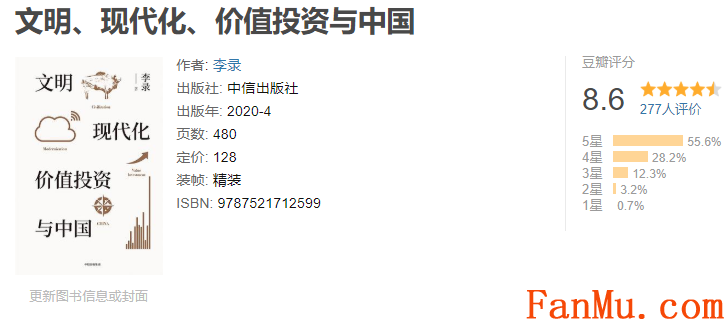
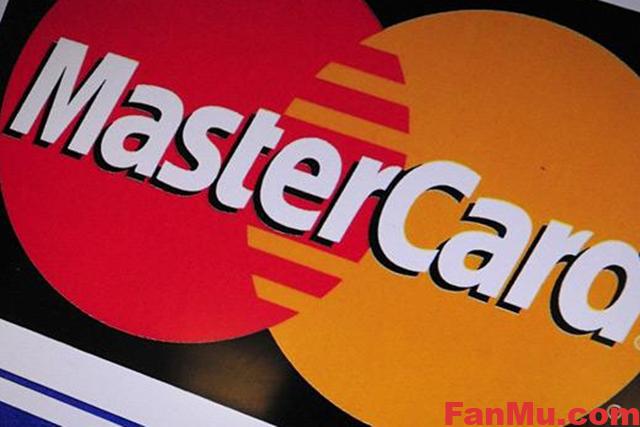
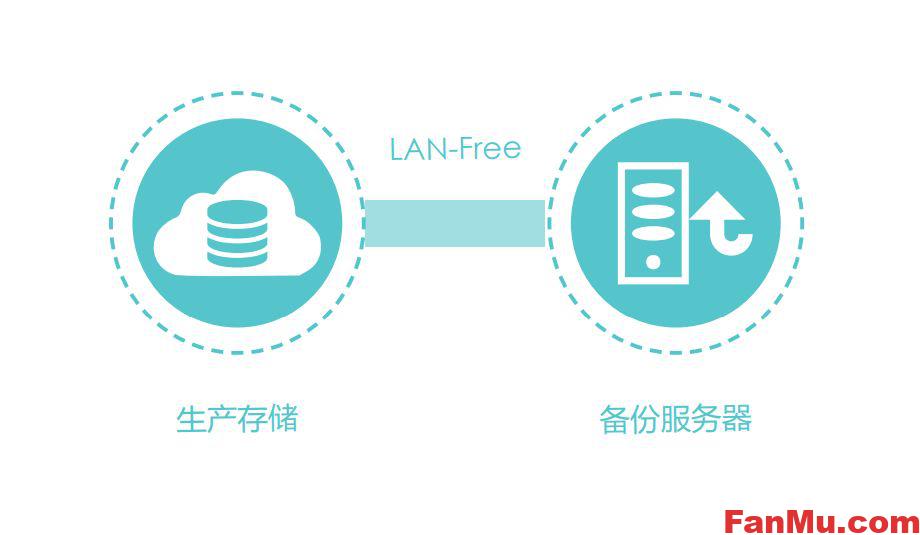

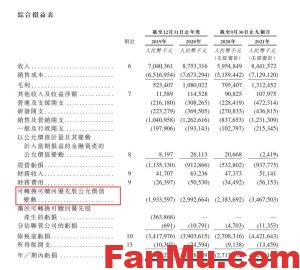
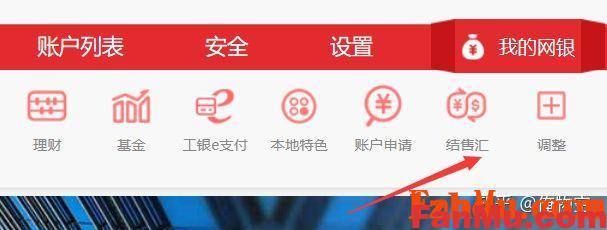


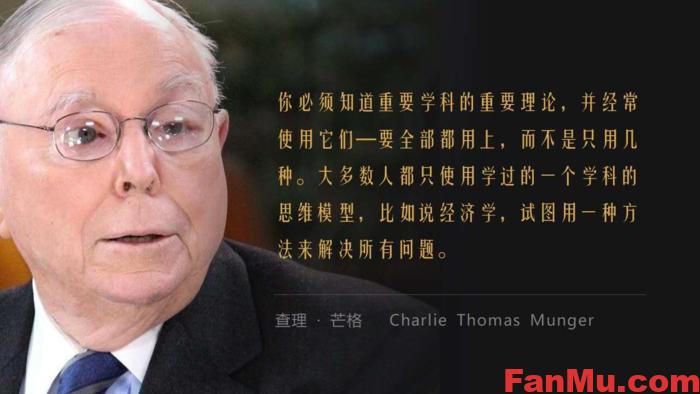
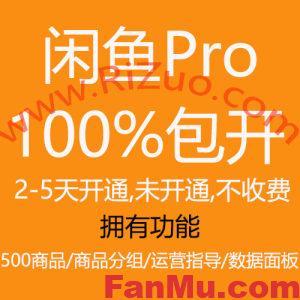
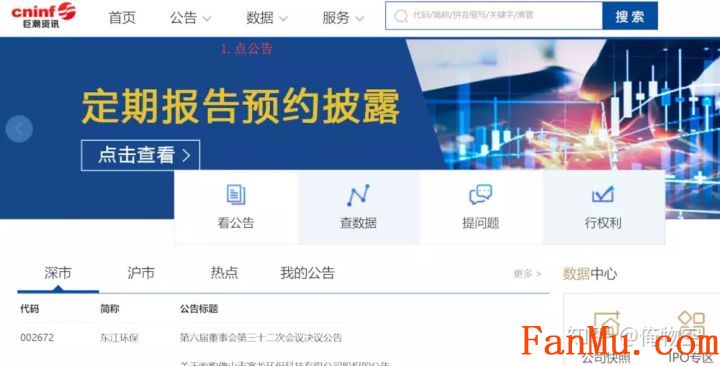

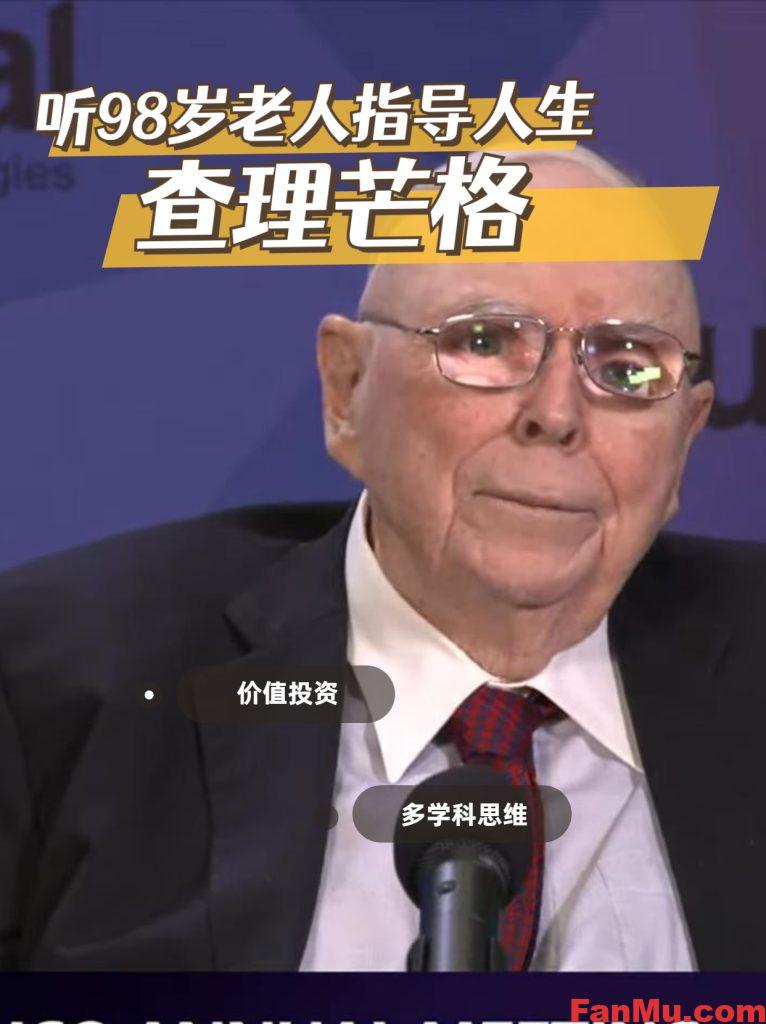
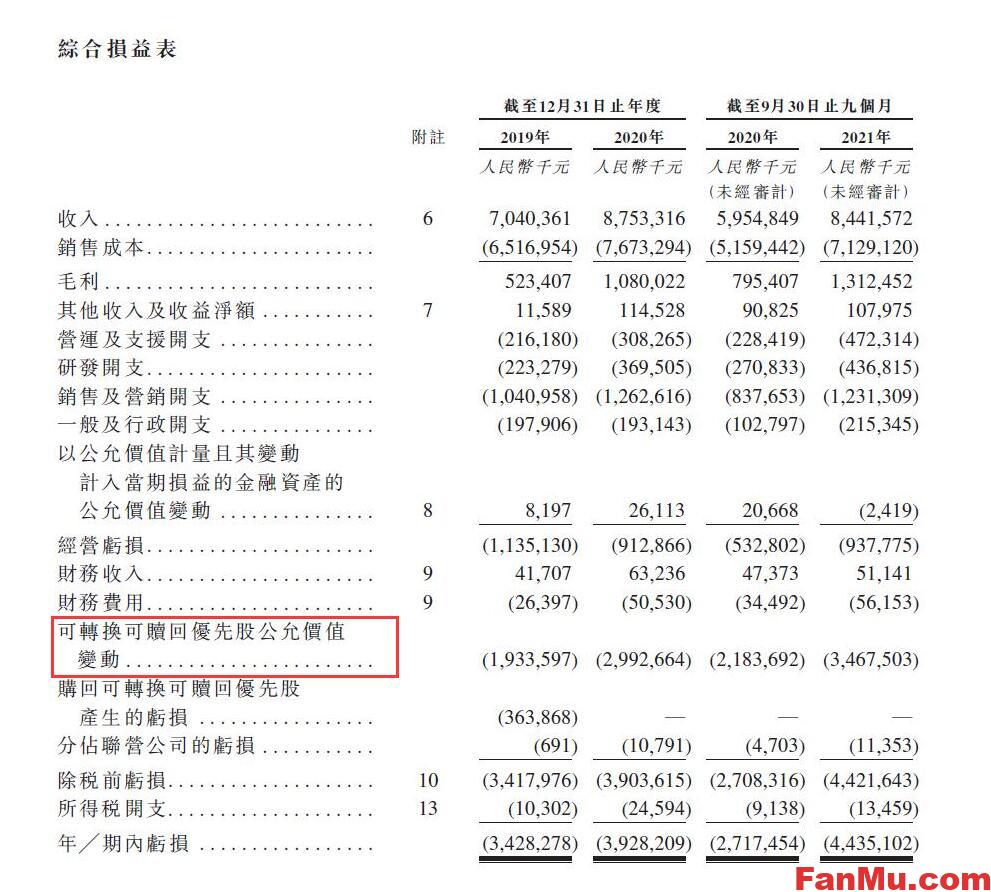


暂无评论内容